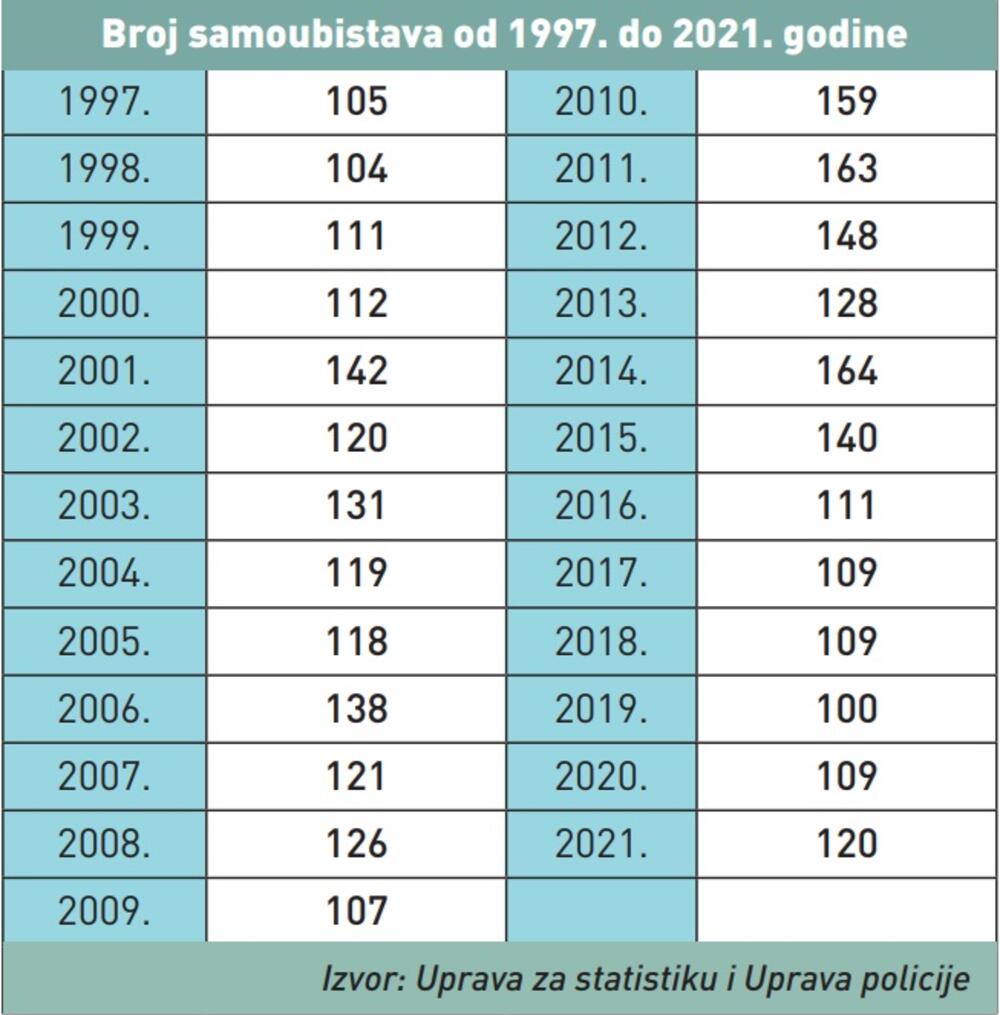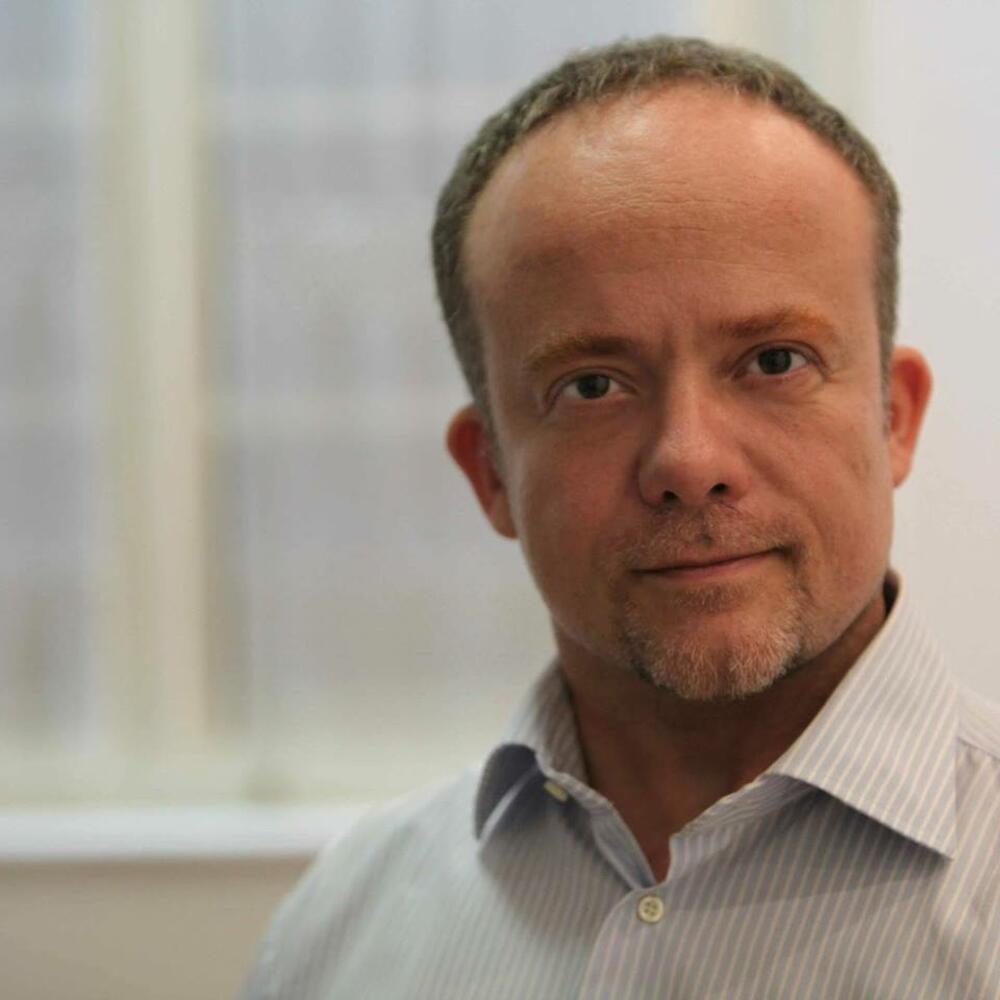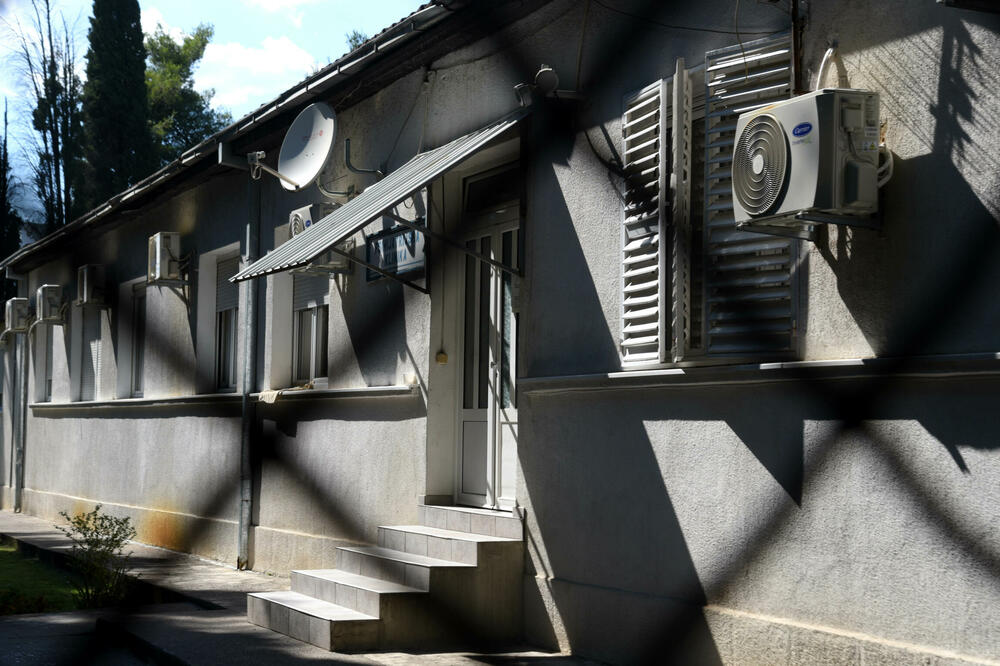He thought about killing himself more than once. Thoughts about it still exist.
"Even in high school, I noticed that I wasn't looking forward to things like my peers, that somehow I didn't care," he tells Center for Investigative Journalism of Montenegro (CIN-CG) a young man who apparently has no problems - physically healthy, he has a decent job, and he has no particular life traumas. When he started therapy, he realized that he was suffering from depression.
This is just one resident of our country who has such problems. He found the courage to try to get out of depression.
But many people in Montenegro have no one to help them, because mental health problems are still "swept under the carpet" in our country.
According to the latest report of the World Health Organization (WHO) from 2019, Montenegro was in 14th place in the world in terms of the number of suicides per capita. According to the data of the Police Administration, there were more suicides in the previous two years than in 2019, so it can be concluded that, unfortunately, we are even higher on that list.
According to WHO data, our country had the highest suicide rate in the region - 16,2 percent. After us, Slovenia was the worst, with a rate of 14 percent, while Croatia had a rate of 11, Serbia 7,9, Macedonia 7,2 percent. Albania is the country with the lowest suicide rate in the region at 3,7 percent.
Although it has been at the top of the list for the number of suicides in the world for years, Montenegro practically does not have any form of support for people with suicidal thoughts, not even an SOS line that they could call for help.
"Suicide prevention does not exist in Montenegro," admits the psychiatrist, dr Lidija Injac-Stevović.
The psychiatrist, who earned her doctorate on the subject of suicide, explains that the stigma associated with mental illness is the main reason people do not seek help in time. He emphasizes that there are modern drugs that effectively prevent suicide, such as lithium carbonate, which is given in combination with other drugs in relation to the patient's current condition.
"In case of high risk, patients must be hospitalized," emphasizes the doctor.
They don't do an autopsy, they write it off as an accident
It is also problematic that, as Injac-Stevović points out, the family usually does not allow an autopsy to be performed, which is very important in order to discover the cause of suicide.
According to the unofficial information of CIN-CG, it often happens that suicides in Montenegro are registered as "accidents", when the family so requests.
In Montenegro, according to police data, in the last seven years, 798 suicides were officially committed. In most cases, it was about men who were over 60 years old, and the largest number of suicides occurred in the jurisdiction of the Podgorica Security Center, which, in addition to the capital, also includes Danilovgrad, Cetinje and Kolašin.
However, every year there was a fairly high percentage of suicides among the population aged 40 to 60, as well as younger people. In the previous year, in which, according to police records, there were 120 suicides, over 36 percent were under the age of 60.

Although the police provided CIN-CG with data from 2015 to May of this year, stating that they do not have statistics from earlier years, according to the data of the Statistics Directorate (MONSTAT), it can be seen that the number of suicides has not changed much since 1997 and that was quite high for such a small country, and that every year there were from 100 to even 164 suicides, as many as were recorded in 2014. According to these data, a slight decline in suicides has been recorded since 2016, but the numbers increased again last year.
Injac-Stevović explains that the resurgence of suicides could be explained by the covid pandemic, isolation, fear, but also insufficient availability of services during the corona.
According to research by Injac-Stevović, many more women attempt suicide, but men, according to available statistics, more often succeed in this intention.
Thus, according to her research, in the period from 2012 to 2016, 608 people tried to kill themselves in Podgorica, with an average age of about 40. In those five years, every year more women attempted suicide, from 52 to 66 percent.
Depression fatal for women, lower status for men
Injac-Stevović, in her earlier research doctoral thesis, which followed this problem from 1995 to 2005, stated that depression was a risk factor for suicide in women, while in men lower socio-economic status was decisive.
Compared to men, women were more often treated psychiatrically, and more often announced and attempted suicide.
In men, the more common risk factor was alcoholism, drug addiction and interpersonal conflicts, and the risk factors, which mediated equally in both sexes, were stressful life events and an acute stressful conflict situation.
The highest number of suicides were committed on Tuesdays and Saturdays, and firearms were most often used.
"Given that suicide is one of the leading causes of death in Montenegro, suicide prevention should become a priority in the health policy in our country," concludes the research paper.
And in the research on suicides conducted by the late psychologist, Dr. Danijela Rakočević-Medojević, "Socio-demographic peculiarities of the suicidal population in Montenegro" for the period from 1997 to 2007, it can be seen that the situation has not changed significantly since then.
In the period of those ten years, 1.321 people committed suicide in Montenegro.
The highest rate of suicides was in small areas - Danilovgrad, Cetinje and Mojkovac. These three cities, it is added, have been on the margins of socio-economic and political life in Montenegro for a long time, with a high unemployment rate present.

For the period from 2005 to 2007, when only these data were available, according to this research, pensioners were the most vulnerable category, the unemployed were in second place, and housewives who belong to the category of dependents were in third place.
Among the persons who died as a result of suicide, there are no officials, directors and managers, nor those who work in agriculture, forestry or are engaged in technical work.
"The fact is that, the higher the socio-economic status, the lower the tendency towards suicide," Rakočević-Medojević assesses in the research.
International expert studies point out that brain disorders, which are hereditary, cause suicidal behavior in a large percentage.
However, the environment also plays an important role in the development of psychiatric diseases that can lead to suicidal behavior, such as an unfavorable prenatal environment, childhood trauma, stress, and the like.
A recent study published in the scientific journal "American journal of preventive medicine" found that the majority, or 60 percent, of men and boys who committed suicide from 2016 to 2018 in America did not have mental illnesses. It turned out that for a number of them, love problems led to a fatal outcome. From 30 to 40 percent of younger and middle-aged men had a problem with narcotics, and between 43 and 48 percent of them were under the influence of alcohol at the time of death.
Statistics are unreliable, the Institute does not publish data
The statistics kept by the competent institutions in Montenegro are, however, unreliable, so the data of the Police Directorate and the World Health Organization (WHO) are different.
According to the statistics of the Police Administration in 2019, for example, there were 100 suicides, while the WHO report "Suicide worldwide in 2019" recorded 138 suicides in Montenegro that year.
Then, according to the WHO report "Mental Health Atlas 2020", the suicide rate in Montenegro in 2016 was lower than in 2019. However, according to the data of the Police Administration, there were more suicides in 2016 than in 2019. According to "Mental Health Atlas 2020." the rates and number of suicides in some other years also differ compared to the data of competent institutions in Montenegro.
And in the Rakočević-Medojević research, it was pointed out that official statistical data are often not a true indicator of the number of suicides in Montenegro. "Many cases are treated as accidents, traffic accidents, death of undetermined cause, and most often in small communities, where the stigma is more pronounced, the family reports suicide as a natural death," the research states.
And Injac-Stevović claims that monitoring the data is very important, because it is possible to systematically fight on the basis of them, and that it is a big problem if they are not accurate.
And a clinical psychologist Radoje Cerović for years has indicated that something is wrong with the statistics. "Despite the information system, today we don't know the incidence of many diseases, mortality from them and the like," Cerović points out.

He adds that there is no "coroner service" in Montenegro, that is, a service whose main job is to determine the cause of death. If we are among the top countries in Europe and the world in terms of the suicide rate, then monitoring this problem should be a state priority, says Cerović.
"There are no suicides in Afghanistan, officially, because the stigma falls on the whole family and it is often better to say that someone was killed or disappeared than to admit suicide. Therefore, it is up to us to choose a side: will we work according to the rules of the European Union or will we go to Afghanistan", stated this clinical psychologist.
CIN-CG did not receive an explanation from the Ministry of Health (MOH), but also from the WHO, as to why the official statistics of Montenegro and those of the WHO do not match, as well as a number of other questions related to this problem. The Institute for Public Health, which has been responsible for monitoring data since 2010, did not answer our questions either.
Urgently create a prevention strategy
"We don't have any measurements of the state of mental health. And the numbers we have, as you can see, do not match the real situation", says Cerović.
Psychologists, he adds, also live in some form of illegality or semi-legality. "There is no law, no chamber, and no serious self-regulatory body that would set the rules of the profession and perform monitoring," he reminds.
As a member of the Italian Chamber of Psychologists, Cerović explains that the Chamber constantly updates the rules and standards of the profession. "The state, as part of the public health system, subsidizes psychological services where it is established that there is a need for them," he explains.
That Montenegro does practically nothing to help people who have these problems is also shown by the fact that the Ministry of Health (MOH) established a suicide prevention commission a few years ago, which never started working.
Injac-Stevović points out for CIN-CG that it is necessary for the Ministry of Health to create a suicide prevention strategy, and that representatives of municipalities should be included in this story.
He adds that it is crucial that Montenegro has accurate statistics with a database of both the number of suicides and suicide attempts in hospitals and outpatient settings. She explains that perhaps the most important thing is to work with people who have attempted suicide, in order to better understand what their needs are, and that it is important to include them in the community, create socializing clubs, and an SOS line.
"Such a small country with a high suicide rate really loses, because it could prevent many suicides," concludes the psychiatrist.
Every three seconds someone tries to kill themselves
According to WHO data, around 800.000 people commit suicide in the world every year, and there are significantly more people who attempt it. So every 40 seconds someone in the world commits suicide, and every three seconds someone tries to commit suicide. According to WHO research, more people kill themselves than die from malaria, HIV/AIDS, breast cancer, wars and murder. Suicide is one of the leading causes of death among young people under 30, after traffic accidents, tuberculosis and violence.
Research also shows that more than 90 percent of people who committed suicide suffered from depression or some other mental disorder, or were prone to the use of psychoactive substances - alcohol, drugs and medicines.
In the Strategy for the Protection and Improvement of Mental Health in Montenegro (2019-2023), it is estimated that only depression in the total world population will be the second leading cause of the global disease burden by 2020, right after ischemic heart disease.
"Globally, about 300 million people are affected by depression, more women than men. "Nine out of ten countries with the highest suicide rate in the world are in Europe," writes the Strategy. It is estimated that for every adult person who has committed suicide, there are 20 other people who have attempted suicide.
"As much as 1.4 percent of all deaths in the world are caused by suicide, which means that more people die from suicide than in all armed conflicts in the world. 79 percent of suicides at the global level occur in low and medium developed countries. A man is five times more likely to commit suicide than a woman," the document reads.
Globally, the most common suicide methods are pesticide ingestion, hanging, and firearms.
For years, Hungary had the highest suicide rate in the world, and at the beginning of the 21st century, the first four places in terms of suicide rate were occupied by four countries of the former Soviet Union - Lithuania, Russia, Estonia and Belarus. According to the latest WHO data, the top ten countries with the highest suicide rate are still Russia and Lithuania, but the African countries Lesotho, Eswatini, South Africa, and South American Guyana and Suriname are also leading the way. South Korea is at the top, as well as some islands in the Pacific Ocean. For decades, Greece has been the European country with the lowest suicide rate, while Arab countries have the lowest rates in the world.
One bathroom per 20 patients
Injac-Stevović for CIN-CG also emphasizes that the poor conditions in which psychiatric institutions operate in our country refuse patients to accept treatment.
"In the Clinic in Podgorica, you have one bathroom for every 20 patients," explains the doctor.
Radoje Cerović points out that you can measure the development of consciousness and modern culture in one country by the state of psychiatric institutions and services.
"If the management of the Clinical Center had not intervened at the last moment, the roof of neuropsychiatry would have collapsed on patients and doctors. The situation in Dobrota is in the domain of horror...", assesses Cerović.
In four months, 38 suicides
The police recorded 38 suicides from January to May this year.
10 suicides were registered in the jurisdiction of the Podgorica Security Center, seven in the territory of the Nikšić center, while five were registered in the jurisdiction of CB Herceg Novi, and four suicides each were recorded in the territory covered by CB Bijelo Polje, Berane, Pljevalja and Bar.
"Since the beginning of the year, the highest number of suicides was registered in February - 12", it is written in the answers of the police to CIN-CG.
React in time
In 2016, suicide was the second leading cause of death among young people aged 15 to 29 in the world. In several countries, suicide is even the leading cause of adolescent death.
"Almost half of all mental illnesses occur by the age of 14, and three-quarters of mental illnesses by the mid-twenties," writes the Strategy.
The research, which was conducted in 2014 among 167 adolescents, from 16 to 19 years old in several high schools in the capital, found that suicidal thoughts and behaviors are very common among adolescents from Podgorica, and that they are correlated with addictions to tobacco and alcohol , drugs and gambling.
"As many as 16,5 percent believe that committing suicide would solve all their problems. 27 percent of them think about self-harm, 17,6 percent think they are worthless, and 23,5 percent of the respondents stated that they do not look forward to a long life," writes psychologist Irene Boričić in the research.
Seek help in Serbia
Although almost all countries in the region in relation to the number of inhabitants have a lower percentage of suicides than Montenegro, the support system for people with suicidal thoughts is much more accessible.
So, for example, in Serbia, which according to official statistics has twice the suicide rate of Montenegro, there are various support programs, online communities and non-governmental organizations that deal with this problem.
Citizens have at their disposal an SOS line for suicide prevention, which operates at the "Dr. Laza Lazarevic" Clinic in Serbia. Line 0800-309-309 is free and available 0800/300. The number of the line in the center "Srce" is 303-14-23 and can be called every day from XNUMX:XNUMX to XNUMX:XNUMX.

Bonus video:




